These Beautiful Woven Refugee Tents Harness Power From The Sun
All over the world, conflict, drought, and other problems displace people from their homes. There are some 40 million people worldwide who seek basic security and life in refugee camps. Most find themselves living under tarps or in a tent, which is less than optimal and can make a bad situation even worse. So Jordanian-Canadian architect and designer Abeer Seikaly set to work creating a new of woven refugee tents that enable refugees to live with dignity and greater comfort.
Abeer, a resident of Amman, Jordan, realized that it’s more than possible to live nomadic lives in tents, provided the tents were comfortable. Her distant ancestors did so with ease. In a brief, she wrote: “The movement of people across the earth led to the discovery of new territories as well as the creation of new communities among strangers forming towns, cities, and nations. Navigating this duality between exploration and settlement, movement, and stillness is a fundamental essence of what it means to be human.”
Slide header
Slide header
The woven shelters she came up with are still conceptual but are proven to be able to work. The fabric creates a private enclosure and comes with some fundamental amenities, including water and electricity powered via the sun. The solar-powered skin stores the sun’s energy and converts it to usable power. There’s also a water storage tank at the top of the tent that allows people to take showers, albeit brief ones. There’s a drainage system that prevents flooding.
“This lightweight, mobile, structural fabric could potentially close the gap between need and desire as people metaphorically weave their lives back together, physically weaving their built environment into a place both new and familiar, transient and rooted, private and connected,” says Seikaly.





